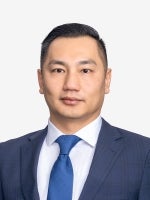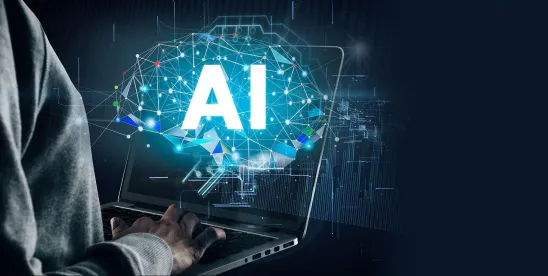The US Patent and Trademark Office (USPTO) recently issued its 2024 Guidance on Patent Subject Matter Eligibility and July 2024 Subject Matter Eligibility Examples. This latest update builds on the 2019 Guidance by providing further clarity and consistency to how the USPTO and applicants should evaluate subject matter eligibility of claims in patent applications involving inventions related to artificial intelligence (AI) technology.
The 2024 Guidance explains when AI and machine learning (ML) inventions may be eligible for patent protection under the Alice/Mayo test. The Examples clarify how AI-related claims can integrate judicial exceptions into practical applications and emphasize the difference between claims that broadly recite a desired outcome (e.g., ineligible) and claims that describe a particular method to achieve the outcome (e.g., eligible). The main takeaway is that AI inventions are more likely to be deemed subject matter eligible when the claims indicate how the AI inventions achieve a particular technical improvement, focus on specific hardware implementations, provide specific details about the training and/or implementation of the AI model, and/or show the incorporation of the AI model into an improved technological process.
A link to the 2019 Guidance can be found here.
Practice Pointers
The 2024 Guidance provides practice pointers for patent practitioners.
- Emphasize how the invention integrates a judicial exception into a practical application, such as by highlighting specific improvements to the function of a computer or technological field.
- Utilize the new examples in the 2024 Guidance to frame claims and arguments. For example, describe a specific application of AI to a particular technological field or a specific way to achieve a desired outcome.
- Document how the claimed invention improves over existing technological processes to show that the claims are not merely an abstract idea, but a practical application. In addition, describe any specific technical hurdles that are overcome by the invention.
Part 1: Overview of the 2024 Guidance
These new updates align with the previous 2019 guidelines and examples provided by the USPTO in terms of analytical framework for assessing patent subject matter eligibility and examples for applying the analytical framework.
The USPTO addresses AI-related concepts under the “mental process” or “mathematical calculation” frameworks — with the possibility of implicating — “organizing human activity” or “fundamental economic practice” with the particular use cases of AI. When referencing AI/ML, the AI guidance focuses heavily on the practical application analysis of the 2019 guidelines and notes that “[m]any claims to AI inventions are eligible as improvements to the functioning of a computer or improvements to another technology or technical field.” The 2024 Guidance provides insights into both AI/ML and other software-related inventions (e.g., financial technology) for both prongs of the second step (e.g., Step 2A) of the two-step subject-matter eligibility analysis and hypothetical examples to contextualize these insights.
Application of Alice/Mayo Framework
The 2014 Guidance provides specific instructions for evaluating AI inventions by focusing on the two steps of the Alice/Mayo framework:
- Step 2A, Prong One: Determining whether a claim recites an abstract idea.
- Step 2A, Prong Two: Evaluating whether the claim integrates the judicial exception into a practical application.
Under Step 2A, Prong One, the 2024 Guidance explains that AI inventions risk reciting a judicial exception in a few ways: (1) by reciting “mathematical concepts,” (2) by reading on a mental process, or (3) by reciting merely the idea of a solution without detailing how to implement it.
Under Step 2A, Prong Two, the 2024 Guidance acknowledges that “many claims to AI inventions are eligible as improvements to the functioning of a computer or other technology.” The 2024 Guidance then clarifies the distinction between claims that are eligible as improvements to a computer or technological field and those that are not. The 2024 Guidance states that eligible claims must demonstrate a specific improvement as described in the specification.
Furthermore, the 2024 Guidance and Examples appear to reconfirm the diminishing role of Step 2B in the eligibility analysis. The 2024 Guidance and Examples make no significant changes to the way the USPTO interprets Step 2B, and does not provide any example of a claim that is ineligible under Step 2A but eligible under Step 2B.
Part 2: New AI-specific Examples
The 2024 Guidance introduces three new examples (e.g., Examples 47-49) to emphasize the importance of detailing how AI provides “a technological solution to a technological problem.” Each example includes at least one ineligible claim and one eligible claim. In all examples, eligibility arises under Step 2A, Prong Two, where the eligible claims include sufficient post-ML-analysis steps to integrate the abstract idea judicial exceptions into a practical application.
Example 47: AI for Anomaly Detection Using Neural Networks
In Example 47, the focus is on claims that describe an application-specific integrated circuit (ASIC) implementation of an artificial neural network (ANN) for anomaly detection.
Claim 1 recites an ASIC for an ANN. Specifically, the claim describes the physical structure of the ASIC including a plurality of neurons and synaptic circuits. This claim is deemed to be eligible because, at Step 1, it falls within the statutory category of a machine and, at Step 2A, Prong One, the claim does not recite a judicial exception since it is directed to a physical device with specific hardware components (e.g., not an abstract idea). It is worth noting that this claim does not recite any method or method-like steps.
Claims 2 and 3 recite methods for detecting malicious activity, but only Claim 3 was deemed eligible. Claim 2 recites a method claim that involves leveraging an ANN to detect anomalies in a data set using the trained ANN without any more detail about how the trained ANN operates or how the detection is made. This claim is deemed to be ineligible because, at Step 2A, Prong One, it recites a mental process (e.g., discretizing, detecting, and analyzing steps), and, at Step 2A, Prong Two, the claim does not limit itself to any particular field of use nor aimed at solving any particular problem.
In contrast, Claim 3 was deemed eligible because it adds more specific details about the structure and training of the ANN by applying the anomaly detection to network monitoring and further recites additional elements of post-anomaly-detection steps. These steps include detecting malicious activity and performing remedial measures to remove and block the malicious activity. This claim was found eligible at Step 2A, Prong Two because it integrates the abstract idea into a practical application by improving the technical field (e.g., network monitoring). The specification should also describe the asserted improvement.
Takeaway: This example illustrates that AI claims focused on specific hardware implementations or that incorporate the AI model into an improved technological process are more likely to be patent eligible.
Example 48: AI for Analyzing Speech Signals
In Example 48, the focus is on claims that describe AI-based methods of analyzing speech signals and separating desired speech from background noise or extraneous speech.
Claim 1 generally recites obtaining a mixed speech signal, converting it into a spectrogram with a Fourier transform, and applying a deep neural network (DNN) to determine embedding vectors. This claim was deemed ineligible because, at Step 2A, Prong One, it recites a mental process (e.g., separation of speech components) and, at Step 2A, Prong Two, it fails to integrate the abstract idea into a practical application due to the use of a generic DNN to perform the abstract idea. Although the claim limits the field of use to speech signal processing, it recites a generic DNN and how it operates, omitting any details as to how the DNN solves a technical problem.
Claims 2 and 3 add more detail to each step. Claim 2 (which depends on Claim 1) further recites synthesizing speech waveforms for different audio sources and particular waveforms together to generate a mixed speech signal, including particular training techniques. The claim was deemed eligible at Step 2A, Prong Two because it integrates the abstract idea into a practical application by specifying how to train and use the DNN to process speech signals, reflecting an improvement in speech signal processing technology.
Claim 3 recites separating out speech signals from different sources and producing a transcript of the separated-out speech signal from a target source. The claim was also deemed eligible at Step 2A, Prong Two because it integrates the abstract idea into a practical application by reciting a specific implementation of the trained model that improves the technological field of speech signal processing.
Takeaway: This example illustrates how adding specific technical details about the hardware structure, training, or implementation of AI models can demonstrate a practical application that improves the functioning of a computer or a technological field.
Example 49: AI for Personalized Medicine
In Example 49, the focus is on reciting an AI-model to assist in personalizing medical treatment to the individual characteristics of a particular patient.
Claim 1 recites using an AI model to recommend an appropriate treatment for a patient. The method involves receiving patient data, processing it through an AI model, and administering a treatment plan based on results of the model. This claim was deemed ineligible because, at Step 2A, Prong One, it recites a mental process (e.g., recommending a treatment plan) and, at Step 2A, Prong Two, it fails to integrate the abstract idea into a practical application due to the use of a generic machine learning model, which amounts to mere instructions to apply an exception using a generic computer component.
Claim 2 (which depends on Claim 1) recites a specific treatment plan of Compound X eye drops. This claim was deemed eligible because, at Step 2A, Prong Two, it integrates the abstract idea into a practical application by requiring that the treatment involve Compound X eye drops or “express the result of a process step.” Notably, the claim does not require any particular dosage or frequency of administration.
Takeaway: This example illustrates that AI claims in the medical field should go beyond applying AI to automate treatment recommendations. Instead, eligible claims should recite specific technical details about the AI model, training process, and how it is integrated into a particular treatment selection methodology to improve upon conventional approaches.




 />i
/>i

